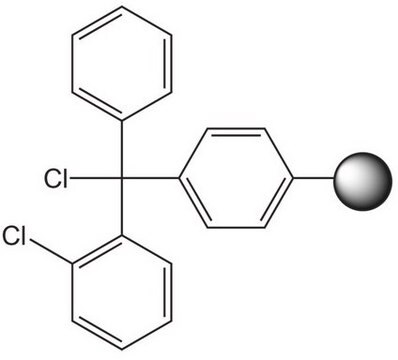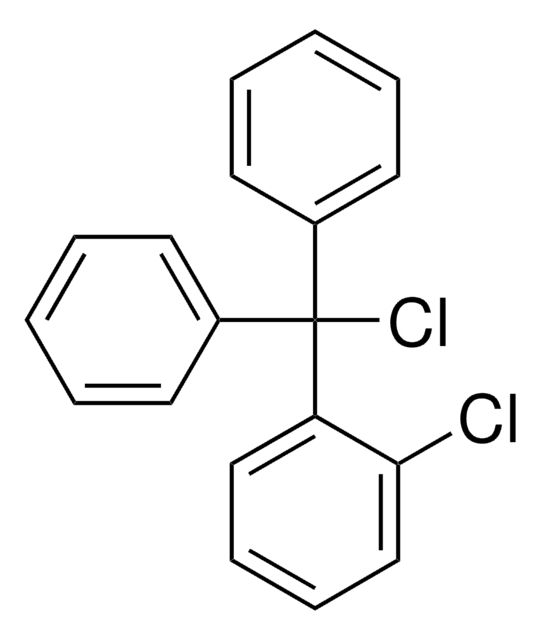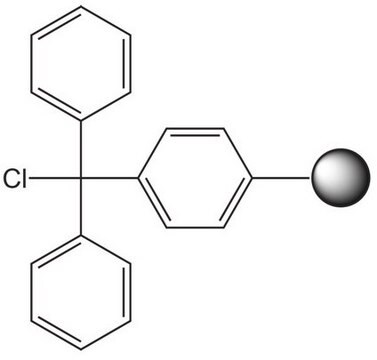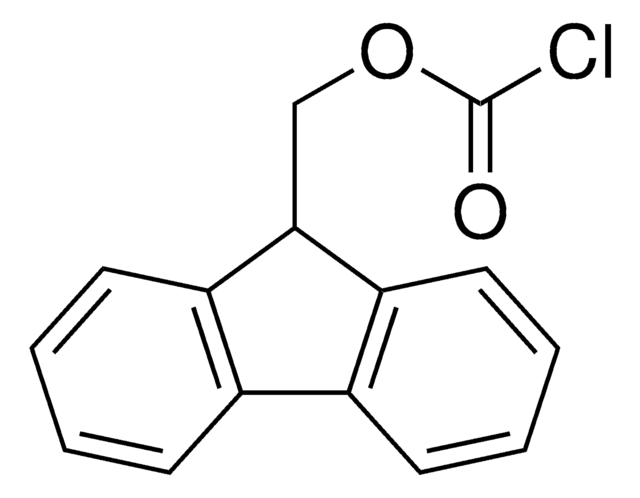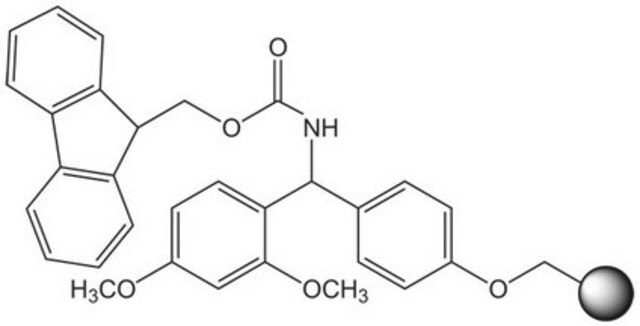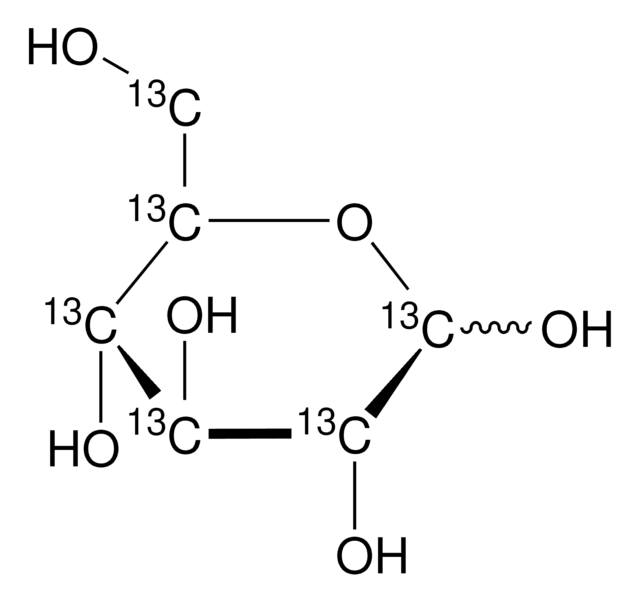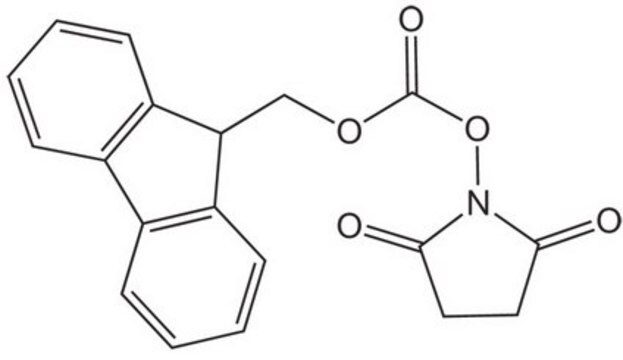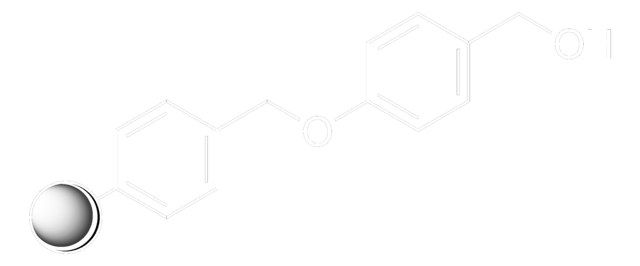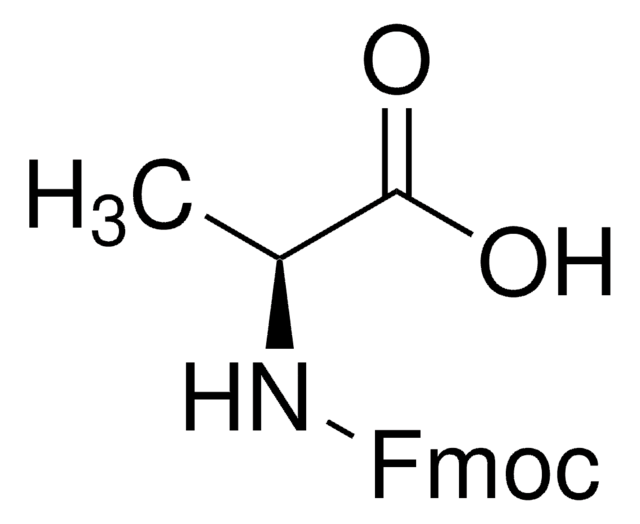532304
2-Chlorotrityl chloride, polymer-bound
100-200 mesh, extent of labeling: 1.0-1.5 mmol/g
Synonym(s):
2,α-Dichlorobenzhydryl-polystyrene crosslinked with divinylbenzene
About This Item
Recommended Products
reaction suitability
reaction type: Fmoc solid-phase peptide synthesis
Quality Level
extent of labeling
1.0-1.5 mmol/g
particle size
100-200 mesh
application(s)
peptide synthesis
SMILES string
Clc1ccccc1C(Cl)(c2ccccc2)c3ccccc3
InChI
1S/C19H14Cl2/c20-18-14-8-7-13-17(18)19(21,15-9-3-1-4-10-15)16-11-5-2-6-12-16/h1-14H
InChI key
JFLSOKIMYBSASW-UHFFFAOYSA-N
Looking for similar products? Visit Product Comparison Guide
Application
- Acid labile resin used in Fmoc-based solid phase peptide synthesis.
- Mild acidic cleavage conditions lead to the release of the peptide acid where fully protected peptides can be released if desired.
- 2-Chlorotrityl chloride resins prevent racemization of the first amino acid and are thus very useful when racemic mixtures are forming (common with residues such as His or Cys).
- This resin also prevents diketopiperazide formation, which can be an issue with proline C-terminal peptide sequences.
Use:
- Attachment of the first amino acid residue is effected by stirring the resin, the protected amino acid, and excess diisopropylethylamine (DIEA) in dichloromethane.
- Cleavage of the final protected peptide fragment is achieved under very mild conditions using either acetic acid/trifluoroethanol (TFE)/dichloromethane (1:1:8; v/v/v), hexafluoroisopropanol (HFIP)/dichloromethane (1:4; v/v) or simply 0.5% trifluoroacetic acid/dichloromethane (v/v).
- Higher concentrations of TFA can be used if retention of peptide side chaing protecting groups is unimportant. Note that trityl chloride is moisture-sensitive, and, therefore, should be stored and handled appropriately.
- If the resin becomes deactivated, treatment with acetyl chloride or SOCl2 in toluene before use is recommended to restore its activity.
signalword
Warning
hcodes
Hazard Classifications
Eye Irrit. 2 - Met. Corr. 1 - Skin Irrit. 2 - STOT SE 3
target_organs
Respiratory system
Storage Class
8A - Combustible corrosive hazardous materials
wgk_germany
WGK 3
flash_point_f
Not applicable
flash_point_c
Not applicable
ppe
dust mask type N95 (US), Eyeshields, Gloves
Choose from one of the most recent versions:
Certificates of Analysis (COA)
Don't see the Right Version?
If you require a particular version, you can look up a specific certificate by the Lot or Batch number.
Already Own This Product?
Find documentation for the products that you have recently purchased in the Document Library.
Customers Also Viewed
Our team of scientists has experience in all areas of research including Life Science, Material Science, Chemical Synthesis, Chromatography, Analytical and many others.
Contact Technical Service